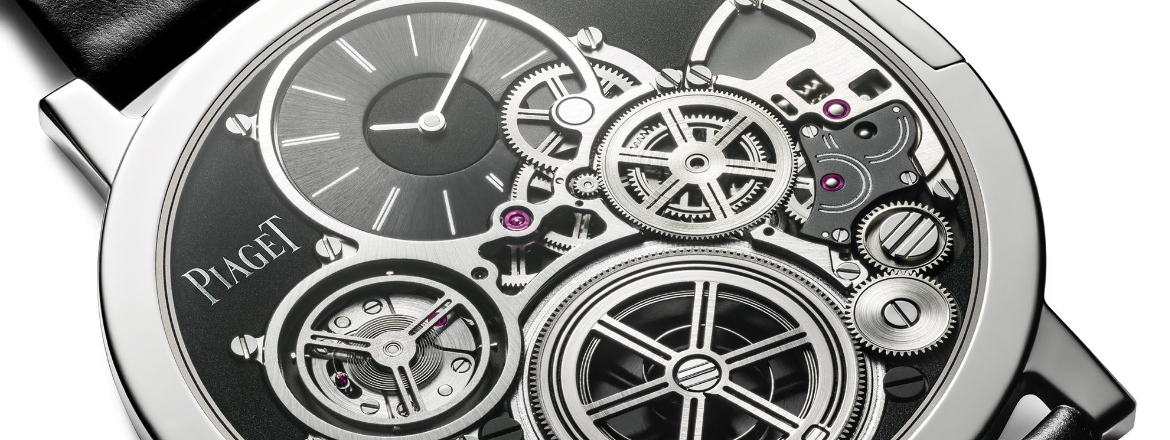Collector’s Guides • 14 Mar 2018
Secrets to Ultra-Thin Watches
One of the main objectives of watchmaking has always been miniaturization, making a watch better by making it smaller. With the advent of complicated timepieces and then the development of the wristwatch in the early 20th century, the race to downsize became more urgent.
Fitting several complex mechanisms into a single movement, which has to remain wearable, requires clever management of space. This also led to the development of ultra-thin watches, guided by the need for an elegant accessory first, but also by the age-old pursuit of making the watch thinner.
The beginning of the ultra-thin wristwatch starts with Piaget and its iconic Altiplano. In 1957, Piaget introduced the calibre 9P, then the thinnest mechanical movement ever created, fitted in a watch that was thinner than anything seen before. This ultra-thin, manual-winding movement measured an astonishing 2mm, resulting in watches barely thicker than 4mm. Considering the lack of computer-aided design or production then, the calibre 9P remains an incredible development even today.

A few years later, in 1960, the same brand unveiled the 9P’s cousin, an ultra-thin automatic movement. The calibre 12P, which measured 2.30mm, was developed around what was then a relatively recent concept: the micro-rotor. While automatic watches usually relied on a centrally mounted oscillating weight, the rotor in the 12P was much smaller and integrated into the bridge work, shaving off the few millimetres required for a central rotor. These two movements, 9P and 12P, set the tone for the decades to come and gave Piaget the reputation for extra-thin watchmaking it still retains today.
Yet, Piaget was not the only one playing the ultra-thin field by the 1970s. A prominent rival was Jean Lassalle, a Swiss company that designed the Calibre 1200, certainly the thinnest mechanical watch movement ever, with a 1.2mm record-setting height. To achieve such thinness, Lassale removed the top bridges (leaving the parts attached only on one side on the main-plate), and instead use ball bearings for the bearings (14 of them, each using 0.20 mm balls). An automatic version, the calibre Jean Lassale 2000, was later developed, measuring 2.08mm thick.
The Lassale movements, which proved unreliable and extremely fragile (uncasing them for servicing was next to impossible), were produced from 1976 to 1979. Jean Lassalle as a brand was later sold to Seiko, while the technical documents and the patents for the movements were by Lemania. The latter later produced evolutions of the Jean Lassale movements for Piaget (under the name Lemania 1210 and 2010), and also to various other brands such as Vacheron Constantin (under the name Calibre 1160 and 1170).

At the same time, the rapid development of quartz technology in the same decade gave boost to the ultra-thin watches, with no more complex mechanical movements but electronics instead, which allowed the watches to go even thinner. The quintessential ultra-thin quartz watch of the era was certainly the Concord Delirium, created in 1979. It was at the time the thinnest watch ever made (and it is still today one of the very thinnest watches), at 1.98mm thick, thanks to a specially developed quartz ETA movement. Subsequently, a Delirium 2 was released, which was even thinner at 1.5mm. The pinnacle was the Delirium IV, which ended the battle with Japanese watchmakers also producing slim watch watches, that was just 0.98mm case and all. By that point, the watches were “paper thin”. This record thinness was possible primarily by using the caseback of the watch as the main plate for the movement – a construction later used by Swatch for its landmark 1983 plastic watch, and more recently by Piaget.

While the quartz crisis was still decimating the Swiss watch industry, the race for thinness didn’t stop. In 1986, Audemars Piguet developed the ref. 25643 with automatic calibre 2870, the first serially produced automatic tourbillon watch and today still the thinnest tourbillon watch ever. The Calibre 2870 is notable for several reasons. It features an extremely small tourbillon carriage, measuring only 7.2mm in diameter, about 2.5mm in height, and was crafted in titanium. Automatic winding was done with a hammer mechanism that swung back and forth, instead of an oscillating weight. Just like the Concord Delirium, the AP had no main plate and the caseback was responsible for holding the parts – again a way to reduce height. Finally, the visible tourbillon was driven by technical reasons, a way of reducing the thickness of the watch since the tourbillon did not need to be accommodated under the dial.
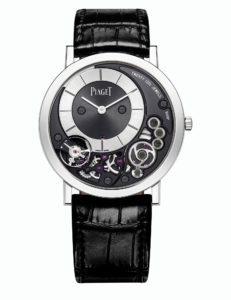
After the 1980s, it was several years before ultra-thin watch came back to centre stage, but when they did, they were impressive. In 2014, Piaget demonstrated again its savoir-faire, by introducing the Altiplano 900P. Using the concept of a caseback merged with the main-plate, it achieved to be only 3.65mm thick – it was at that time the thinnest mechanical watch on the market.
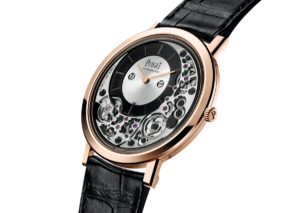
In recent months, we’ve seen the ultra-thin watch continue their comeback. Piaget introduced the Altiplano Ultimate Automatic, now the thinnest automatic watch on the market (beating Bulgari with its 5.15mm Octo Finissimo Automatic). The Calibre 910P again uses the caseback as a main-plate and relies on a peripheral rotor that sits around the movement and not over or within the movement. The Altiplano Ultimate Automatic measures an impressive 4.3mm thick overall.
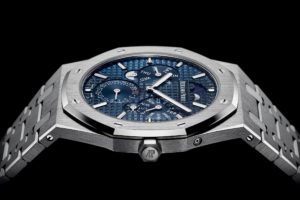
SIHH 2018 was the occasion for Audemars Piguet to prove its ultra-thin prowess after several decades. It did that with the Royal Oak RD#2, which at 6.3mm thick is the thinnest perpetual calendar watch today. Impressively, AP chose to use the complex Royal Oak case, instead of a simple round case that would have been even thinner. Such slenderness has been achieved by simplifying the perpetual calendar module and its integration into the base movement. The calendar mechanism is spread out, rather than stacked up, and also simplified, meaning fewer parts are required.
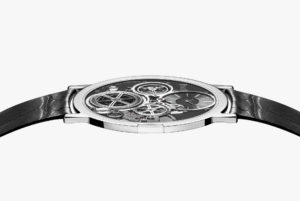
Last but not least, the current record-holder was also unveiled at SIHH 2018: the Piaget Altiplano Ultimate Concept, the thinnest mechanical watch ever created. While still a concept – entirely functional but not available commercially – this watch is just 2mm in its entirety. Using the technology already implemented in the 900P and 910P, Piaget reduced
the size of all moving parts (escapement, balance, barrel, wheels, bridges) to an absolute minimum. Also, the sapphire glass on top of the watch is paper thin, at 0.2mm. Finally, the case is constructed with a special cobalt alloy that’s extra-strong to prevent it bending if the watch is strapped on too tightly. Naturally, the case is monobloc, without a separate case back or bezel. While we’re not sure if the Altiplano Ultimate Concept will be commercialized in the same form, most of the innovations in this stunning watch will filter down to production watches.



